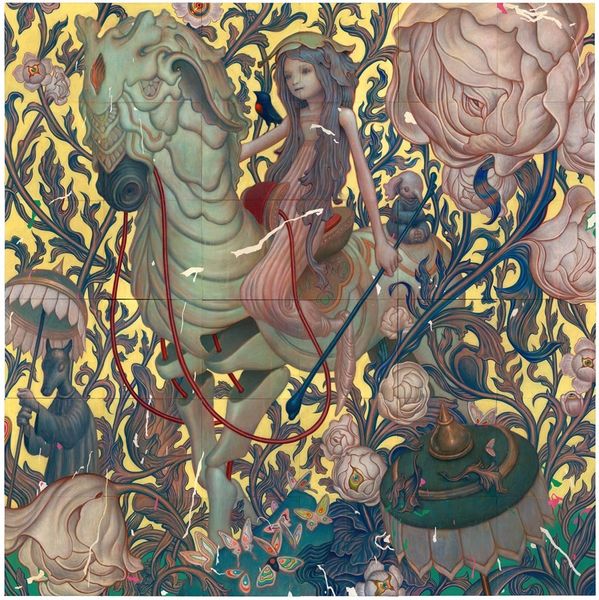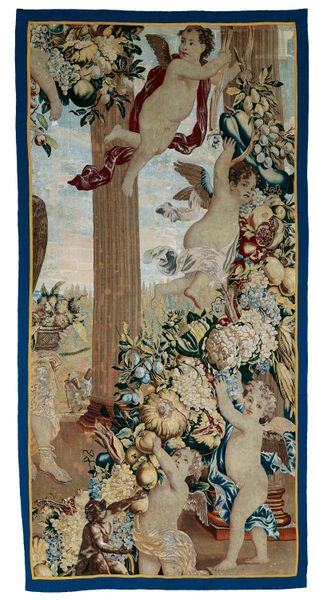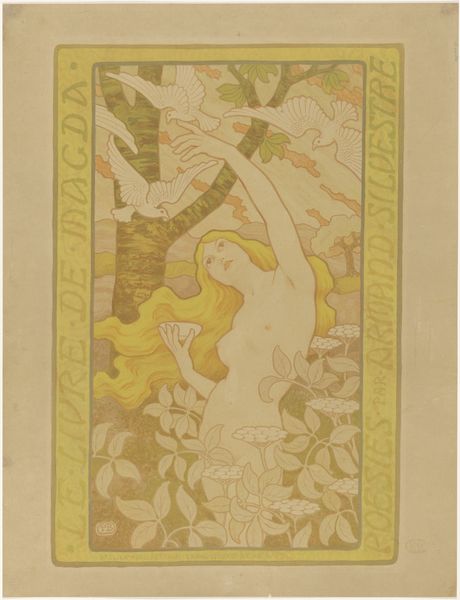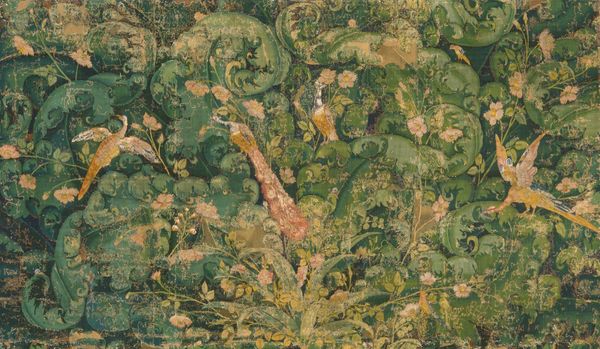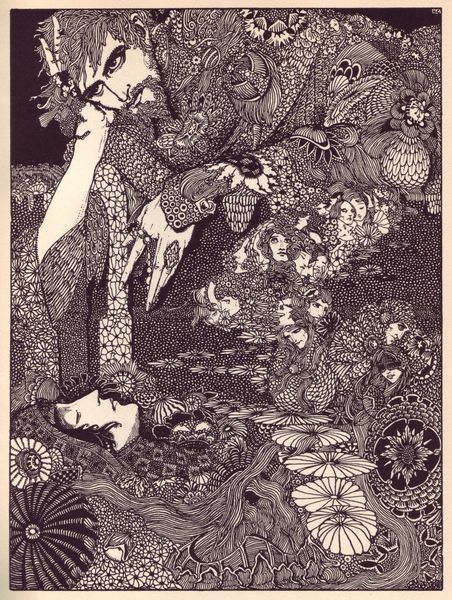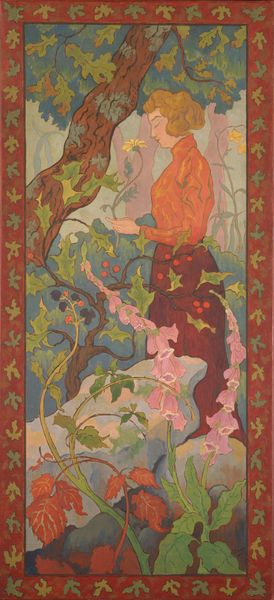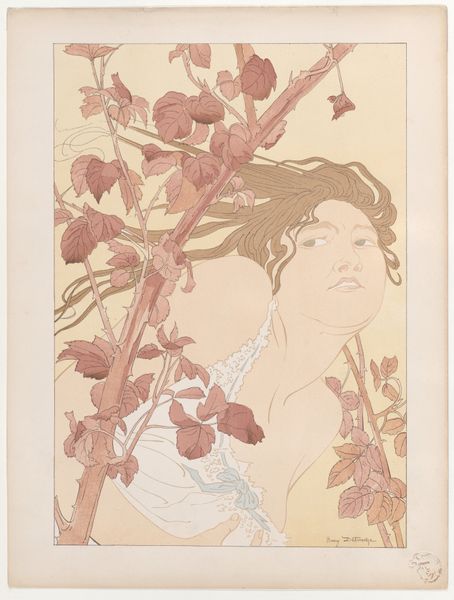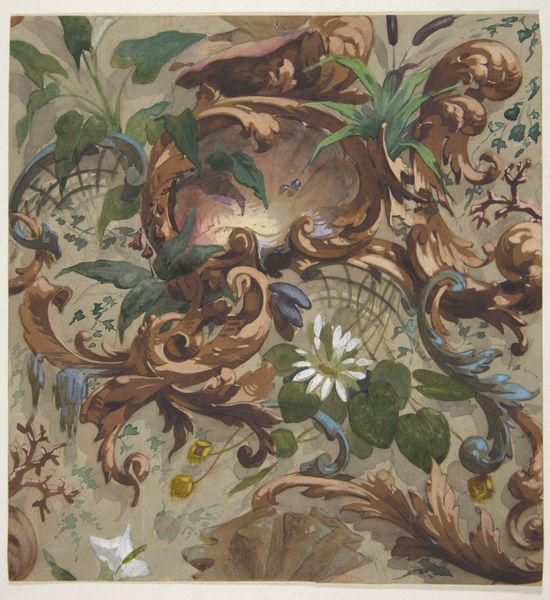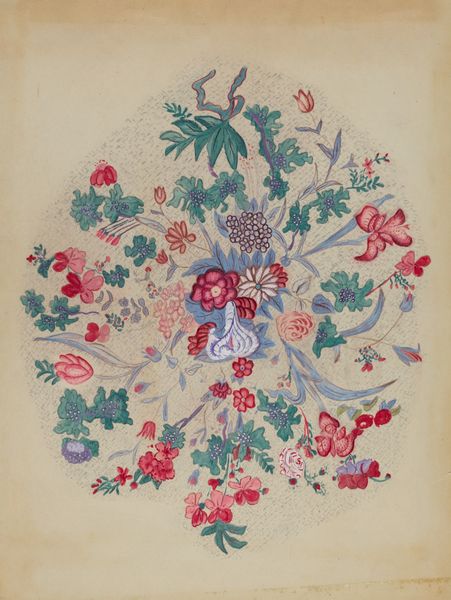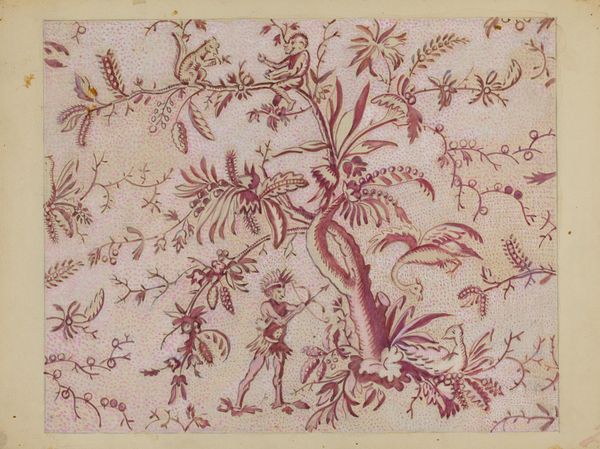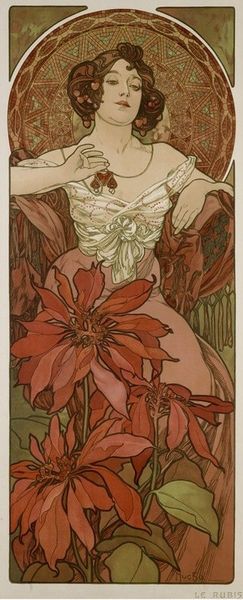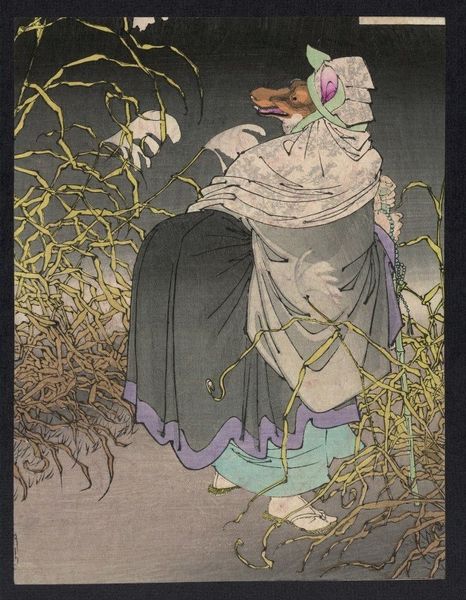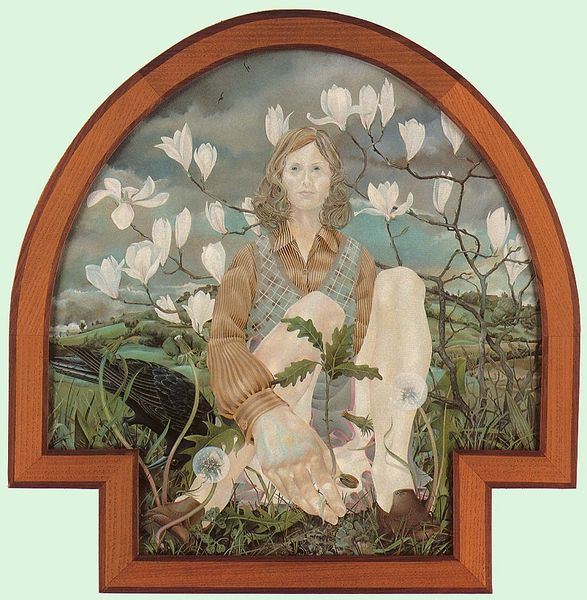
Panel Entitled "Femme à marguerite" (Woman with Daisy) c. 1898 - 1900
0:00
0:00
mixed-media, print, weaving, textile
#
portrait
#
mixed-media
#
organic
#
art-nouveau
# print
#
weaving
#
landscape
#
textile
#
organic pattern
Dimensions: 70.5 × 77.2 cm (27 3/4 × 30 3/8 in.)
Copyright: Public Domain
Curator: This is Alphonse Mucha's "Panel Entitled 'Femme à Marguerite' (Woman with Daisy)," created around 1898-1900. It's a mixed-media print and textile piece, showcasing his iconic Art Nouveau style. Editor: My initial reaction is the deep burgundy background! It immediately sets this piece apart. It's a surprising color choice against the swirling vegetation and fair maiden, grounding what could be saccharine into something moodier. Curator: I think that background, combined with the floral motif, situates the “femme” within a complex historical framework related to women's roles in fin-de-siècle society, linking idealized femininity with decorative and organic elements. Editor: Absolutely! Looking at the woven material and the printing process involved really emphasizes the craft element here. There’s an undeniable emphasis on the production process. It looks less like “high art” and more like labor-intensive design, intended for practical or decorative purposes. Curator: And isn’t that purposeful? Mucha very consciously embraced the decorative arts, wanting to make art accessible to the wider public. The flowers aren't just flowers; they're imbued with symbolism related to the cycles of life, desire, and beauty. The “femme” becomes an allegory for these themes. How is her likeness consumed, and what social dynamics of gender and beauty are in play? Editor: I agree! You see that same push to democratize art in the materials as well. It is not some rare marble, but a more common textile, perhaps expanding access and inviting direct, even tactile engagement. Considering the industrial revolution and new labor practices that accompanied it, pieces such as this highlight craft traditions. Curator: That’s well said. To engage with the political realities and possibilities woven, literally, into this artwork. How can the historical narrative embodied in the labor-intensive weaving inform modern discussions of value in art, in social spaces? Editor: Ultimately, this piece transcends being "merely" decorative. It's an intentional statement of design, labor, and materials. We can delve deeper to truly comprehend its place at the intersection of process and aesthetic appreciation. Curator: It’s an excellent piece that gives us insight into gendered constructions, the intersection between consumer culture, and also female agency as it emerged from within that commercial space at the time.
Comments
No comments
Be the first to comment and join the conversation on the ultimate creative platform.
